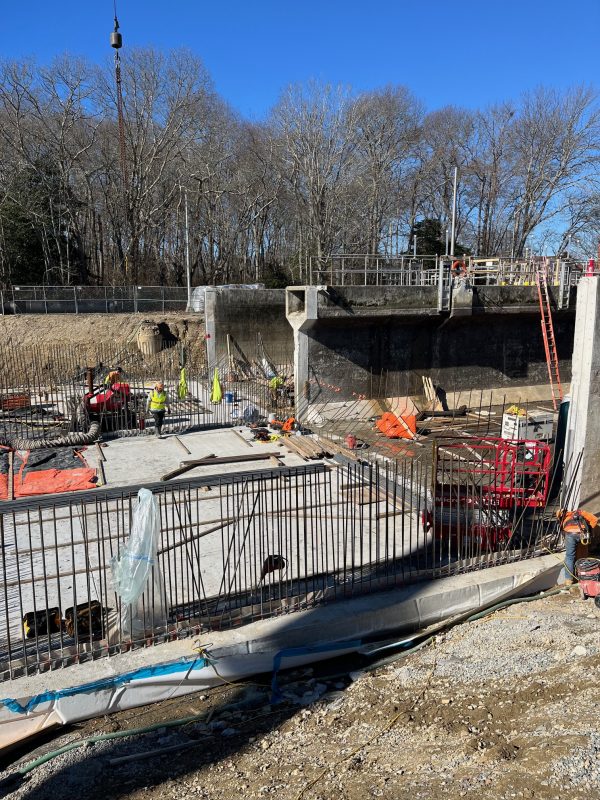$70 Million Sewer Facility Upgrade in Fairhaven Making Progress Under Experienced Supervision
Jeff Osuch’s career in Fairhaven began in 1978, when he was hired as the Board of Public Works superintendent. In 1988, he was named town manager, where he worked until his retirement in 2016. During his tenure he built two wastewater treatment plants in Fairhaven: the West Island facility in 1998 and a major reconstruction of the 1969 water pollution control facility (WPCF) on Arsene street in 1986. It is no surprise that the current administrator brought him back on to oversee the $70 million upgrade and denitrification of the Fairhaven Water Pollution Control Facility (WPCF).
Osuch, and longtime public works employee and current sewer superintendent Rene Robillard, have been involved in the project ever since the Fairhaven town meeting voters passed a $20 million loan appropriation on the 2023 town warrant (to add to the $50 million that had already been approved in previous years). This $70 million investment by the town of Fairhaven will result in critical nitrogen reductions for Inner New Bedford Harbor. Both men gave a tour to Coalition staff the other day to update their progress on the project.
Cranes surround us, as do piles of prefabricated piping made of cast iron, that are designed to be fitted together and withstand many years of use. Workers dash about, attending to rebar-reinforced concrete walls, building structures, and other tasks.
Osuch and Robillard are proud of the progress the crews are making on the facility and lead us through the site in the same direction through which the wastewater moves. We start at the headworks building where 2 two-foot pipes deliver all the town’s sewage (as well as some of the neighboring town of Mattapoisett’s). As you stand above the grates, you can watch as the waters rush under your feet. Surprisingly, the sewage odor is not as overwhelming as we expect, perhaps due to a brisk breeze. Upgrades are being made to ensure equipment integrity and efficiency.
We move to the large cylindrical clarifying tanks used to remove fine solids and grease from the wastewater. There are no major upgrades to the first large clarifiers, although to the side we see a new overflow clarifier and three additional digesters. On an average day, the facility accepts approximately 2.7 million gallons a day (MGD) with 16% of that flow coming from Mattapoisett. During a heavy rain event, flows can peak at 16 MGD. With increased storm events, wastewater needs to be diverted for periods of time as the main line cleans the water (these will only be used in emergencies). Robillard says oversight of the plant now during a storm is very stressful, as he worries when and if he needs to divert flow. “I watch the weather more carefully than the weather people,” he quips.
Next, we walk over the grated walkways above the aeration tanks. Here, the air helps microorganisms break down pollution. Four more tanks are being constructed, and two of the existing tanks are undergoing some reinforcement and repairs (pictured below).
The highlight of course is the new building, which will house denitrification filters as well as associated backwash pumps and blowers, chemical feed systems, chemical storage, and other support systems required to produce significantly reduce nitrogen pollution and meet the mandated 125 lb/day nitrogen levels set forth by the federal permit. This will be a huge decrease in nitrogen into inner New Bedford Harbor.
The plant will continue to discharge to the inner harbor through an outfall located just west of the intersection of Church and Main Streets but with 90% less nitrogen. The project is expected to be finished and meet permit compliance by 2027.
